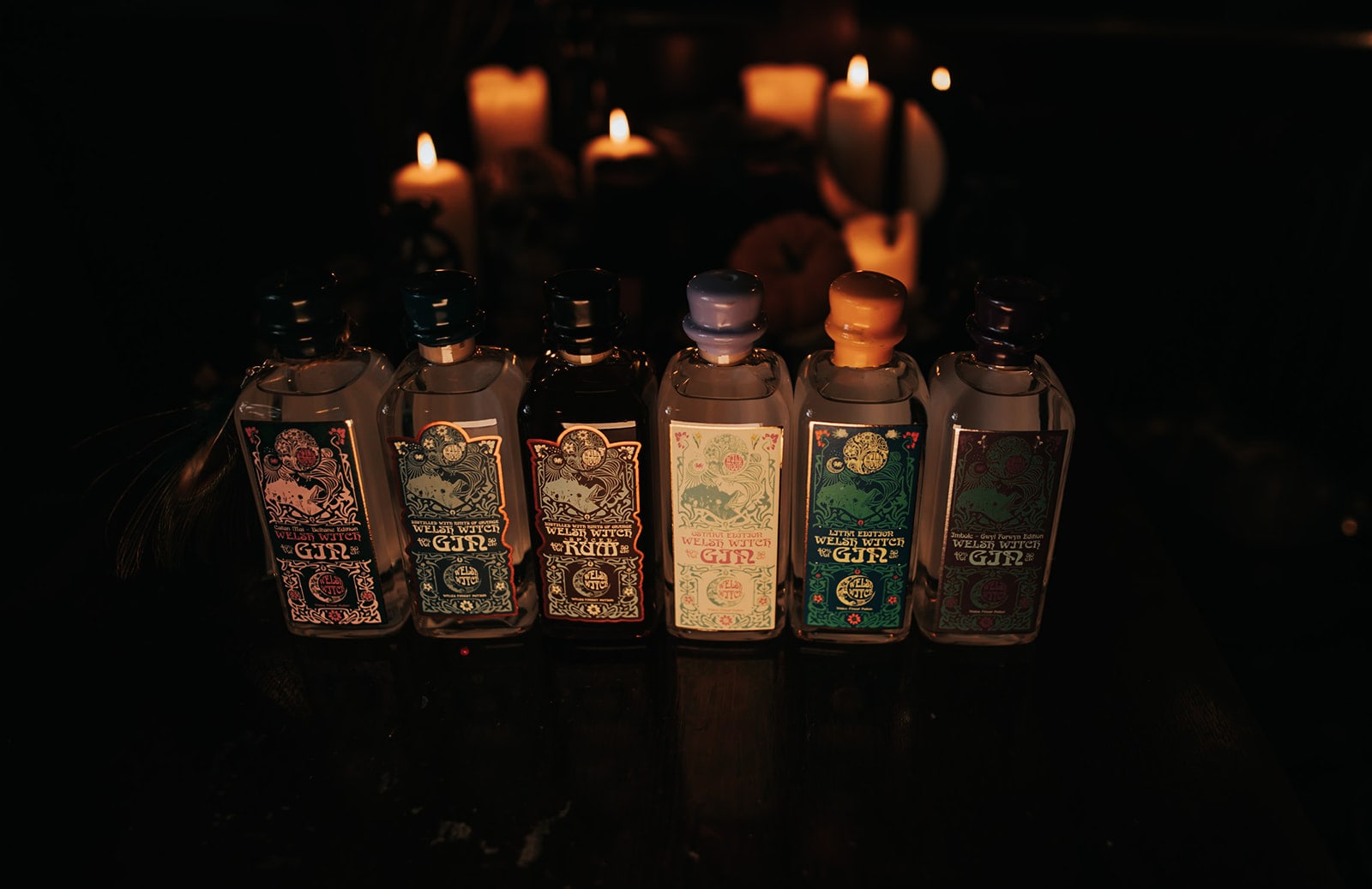
With Spring now fully and truly underway, what better way to relax than with a delightful tipple in the sunshine?! Pop open a Welsh Witch spirit, brew a magical potion and let us spellbind you with a little bit more about our story and how the Wheel of the Year spirits came to be.
What is the Wheel of the Year?
First things first, we have to understand what the Wheel of the Year is and why it inspired the Welsh Witch to create her beautifully brewed spirits. Taking inspiration from Welsh folklore and Celtic pagan traditions, the Wild Moon Distillery focuses on the cyclical nature of life and the changing of seasons. Divided into 8 sabbats, the Wheel of the Year focuses on celebrating presently and honouring the nature of a turning wheel and continual death and rebirth.
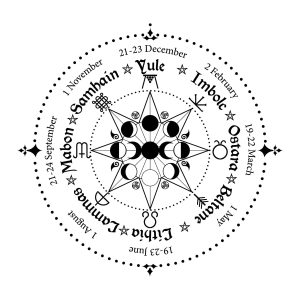
The Wheel of the Year sabbats
Yule – 21st of December
Unlike a traditional calendar year, the pagan Wheel of the Year begins in Midwinter, celebrating Yule during the shortest day of the year, the 21st of December. Yule celebration precedes Christian ‘Christmas’ celebrations, but the two certainly share similarities, many of which are adapted from original Pagan traditions. Gift giving, decoration with natural botanicals such as holly and pine, fires, and feasting on delicious home-cooked food with loved ones are long-standing Pagan ways of celebrating Yule. This is often a time of reflection, conserving supplies and being mindful yet optimistic of longer days to come.
Imbolc – 1st of February
The sabbat succeeding Yule is Imbolc, a tradition celebrated on the 1st of February. Dedicated to honouring the goddess Brigid, Imbolc is believed to be tied to the time preceding lambing season, where the fertile nature of Brigid and lambs in the womb of their mothers are developing. This sabbat is very prominent in celebrating rebirth, the coming of spring, new life and light. Our Welsh Witch Imbolc Gin is inspired by the poetry loving, smithing goddess herself. Laced with an abundance of blackberries, which were berries sacred to Brigid in healing and prosperity practices. Shop Welsh Witch Imbolc Gin.
Ostara – March
Up next, we have the Ostara celebrations, the festivities of which involve marking the spring solstice arrival and the abundance of blooming flowers and plants. Usually around the 20th of March, when the days sees an equal amount of daylight and darkness, the celebrations again focus on rebirth and growing. Traditional activities include decorating and painting eggs (which are a physical symbol of fertility and new life), as well as planting seeds and crops, and honouring nature. Our Welsh Witch Ostara Gin is a spirit adorned with sweet, fragrant violets, to honour the blooming of spring flowers after the dark period of winter.
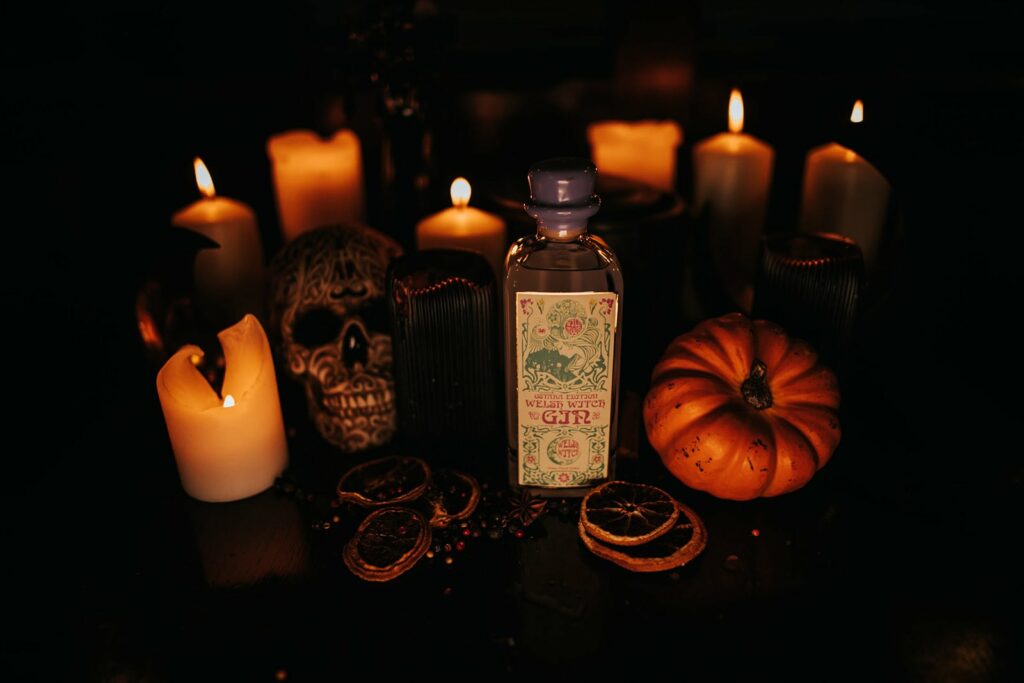
Our Ostara Edition Welsh Witch Gin – shop Welsh Witch Ostara Gin here
Beltane – 1st of May
Our Welsh Witch herself is a Beltane baby, a celebration on May 1st which is the midpoint between the spring and summer solstice. Bonfires are abundant during Beltane, celebrating the fire rituals which are believed to be protective for the coming months. The fire is also symbolic of fertile soil and land, and thus will bring prosperity going forward. Our Welsh Witch Beltane Gin is very symbolic of these fire rituals, with fiery notes of cinnamon, along with floral notes of rose to honour this time of fertility and femininity. Shop Welsh Witch Beltane Gin.
Litha – June
Also known as midsummer, Litha is celebrated on the longest day of the year, around the 21st of June. The peak of the solar year sees Celtics and pagans celebrate this warmth of the sun with many taking to festivals to see the sun rise on the longest day – such as at places like Stonehenge. Traditions of Litha are all about honouring fertility and the Sun during this sabbat – it’s a great time to be outside and soak up all that magical energy. Our Welsh Witch Litha Gin welcomes the sweet and fragrant elderflower into our delightful tipple, the Elder Tree being sacred to the Mother Goddess in the fertile summer months.
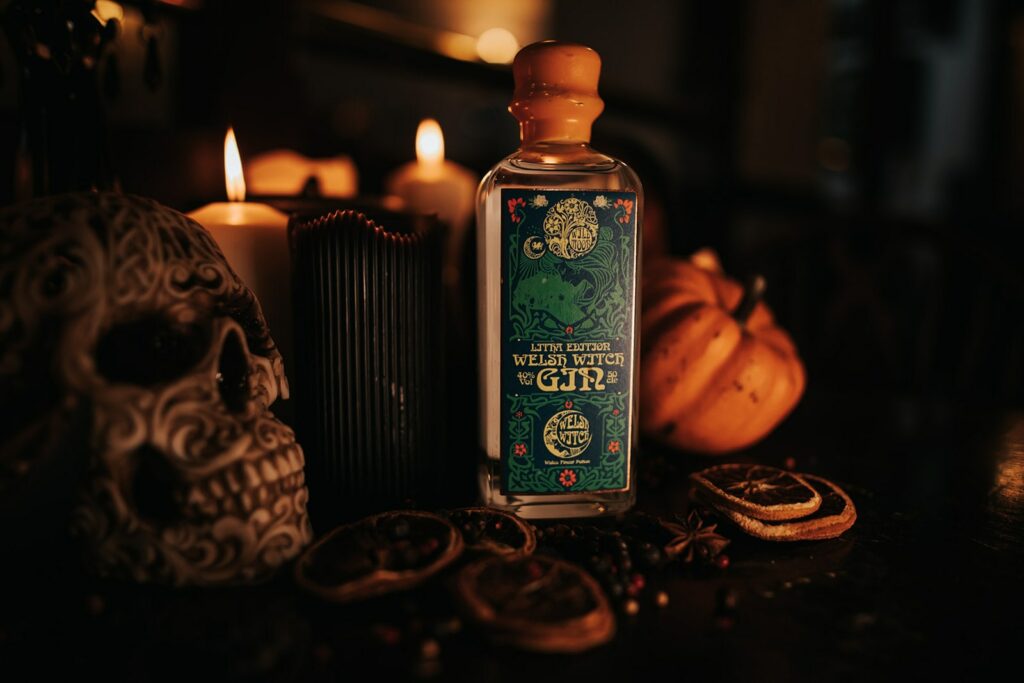
Our magical Litha Edition Welsh Witch Gin – shop Welsh Witch Litha Gin here
Lammas – 1st of August
Up next, we have Lammas, which is celebrated on the first day of August. This is known as one of three harvest festivals, and is associated with crops, wheat and abundance. This time of year is filled with crops, wildlife and enjoying feasts with loved ones. Of course, this time denotes the darkening of the days and is celebrated as such, with thanks given to the cyclical nature of days shortening and lengthening, and so on and so forth. Baking bread is a very common tradition during Lammas, while doing so reflects on gratitude for the abundance of crops.
Mabon – September
Celebrating the autumn equinox, Mabon takes place around the 21st of September. Similar to Lammas, it is also treated as the second harvest festival, where crops are enjoyed, feasts are had. Loved ones get together and communities gather to enjoy the fruits of their labours. It also signifies the beginning of storing this abundance of crops to use for the cold winter months before the rebirth of spring the following year. In today’s world, it’s often a time for reflection and gratitude; in a similar theme, Thanksgiving builds on Mabon traditions and coming together with lovely food and drinks.
Samhain – 31st of October to 1st of November
To end the Wheel of the Year cycle, we close the wheel with Samhain, which takes place on the 31st of October to the 1st of November. Traditionally associated with Hallowe’en, this time was originally associated with wearing handcrafted masks to ward of harmful spirits. This time is also still associated with bonfires, acknowledging this season of ‘death’ (in that crops are less abundant and leaves fall from trees), and feasting with family and friends and enjoying this time of turning inwards for darker, colder weather.
The nature of cyclical seasons
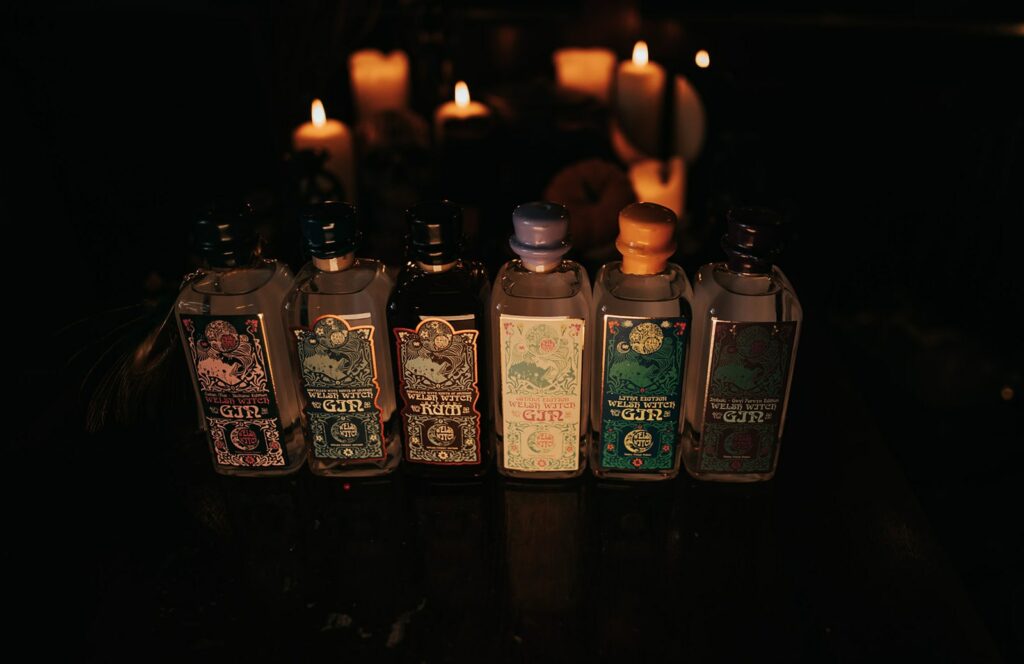
Our divine collection of Wheel of the Year spirits is set to expand soon!
So, the Wheel of the Year has some ties to everyday celebrations we see around the world, and many modern traditions take inspiration from these Celtic and pagan sabbats. However you choose to celebrate these events, we hope if nothing else, you can appreciate the divine beauty of this cyclical nature we see year in year out, bringing times of reflection, celebration, preparation, energy and action alike.
These cycles are such a huge part of the inspiration for Welsh Witch Craft Spirits and we hope that this has given you a little bit more of an insight into the meanings behind our luxury tipples and helps you find which one may resonate with you to try it out! We are of course always creating and expanding behind the scenes so keep your eyes peeled for future Wheel of the Year spirit releases, we have some tricks up our sleeve! We hope to complete our Wheel of the Year collection some day, so you’ve joined the Welsh Witch family at a perfect and exciting time. Shop all of our Welsh Witch spirits, including our Premium Dry Welsh Gin and Welsh Witch Spiced Rum here.
If you’d like to learn more in depth about some of the pagan celebrations throughout the year, our Witch’s Journal blog features some posts on how they are celebrated and how you can get involved!
Love & light,
Welsh Witch HQ x